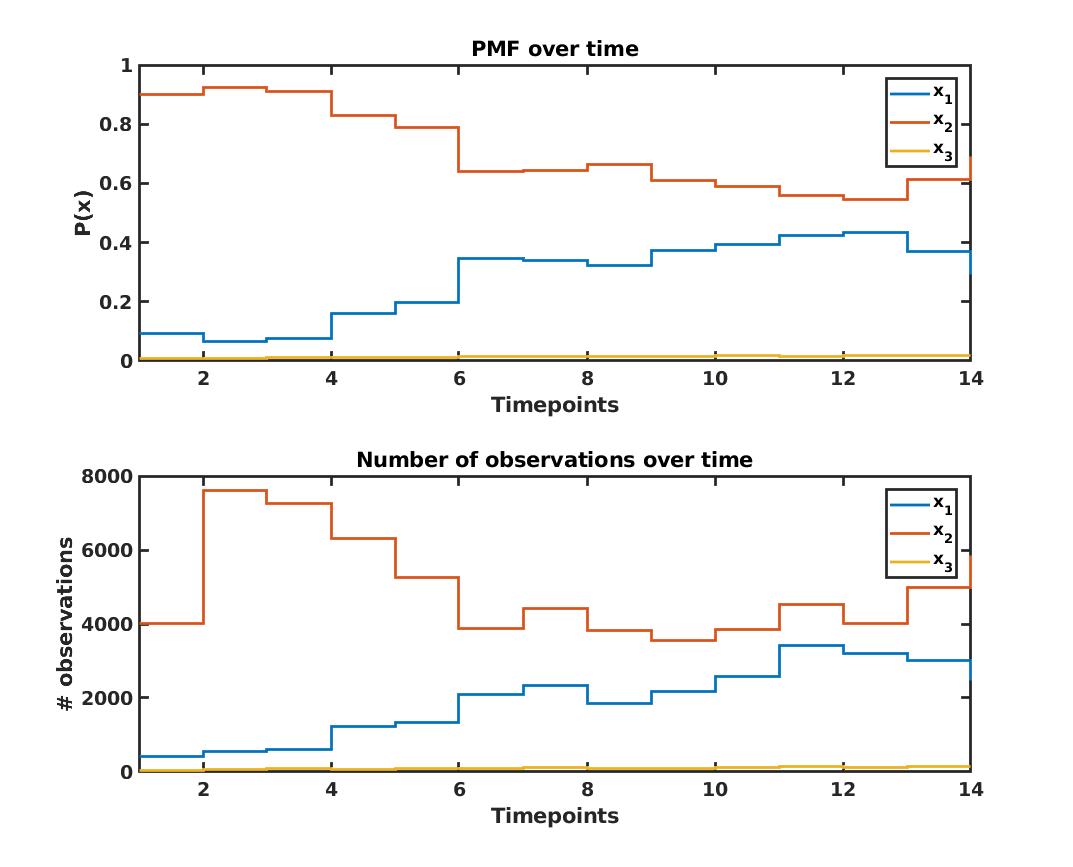Consider a discrete random variable $X$ with three possible realizations $x_1,x_2,x_3$. This variable is observed over time, with the number of observations per point in time varying.
The top figure below shows the probability for the three realizations for each point in time, with the bottom plot showing how frequently each realization has been observed at each timepoint.
Let's assume we observe $X$ at the timepoints 1 to 5 and want to make predictions for the probability of each realization. A simple prediction would of course be just predicting the same probabilities as observed at the most recent time point, 5 in this case, but this would ignore that the probability of $x_1$ has been increasing and that of $x_2$ decreasing over time.
What would be a better approach to predicting these future probabilities?
Since the prediction needs to consider that the predicted values must lie within $(0,1)$ and also sum to 1, my first ideas were
Approaching this as a compositional-data problem, applying a transformation like the isometric log-ratio transformation and then solving a multivariate regression problem
Employing Dirichlet Regression
Am I missing other approaches to this problem? What would be the most reasonable way to make predictions in this case?

